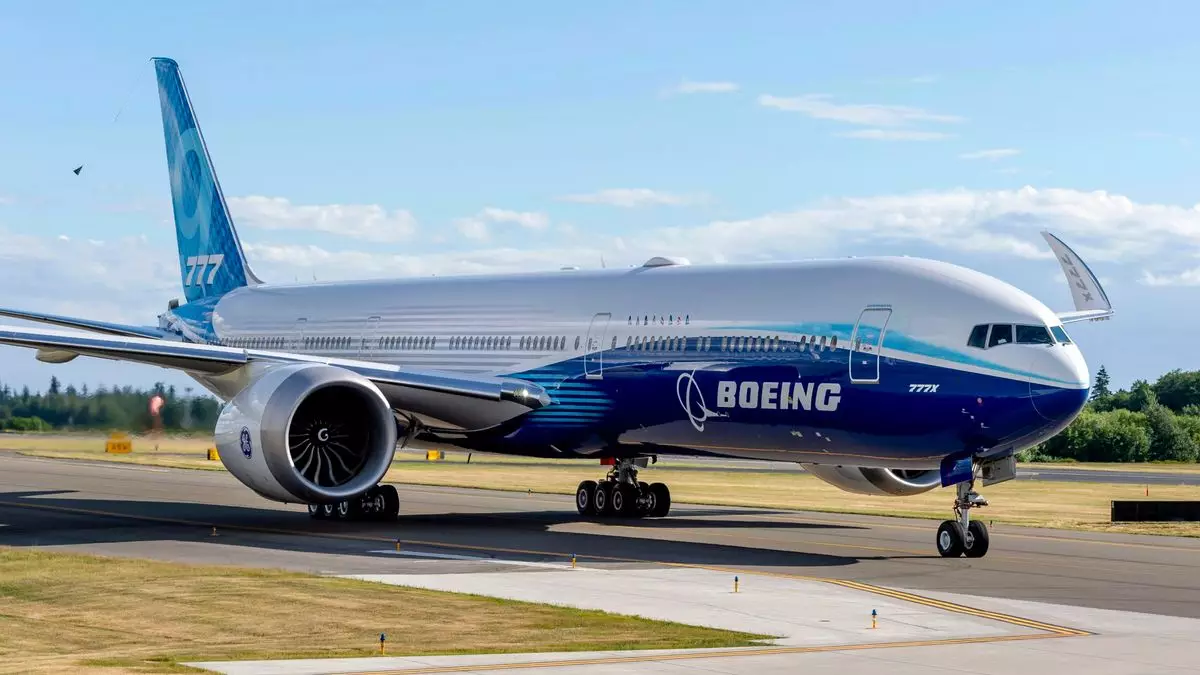After more than seven weeks of significant upheaval, factory workers at Boeing concluded their strike, a pivotal event that holds implications for both the labor force and the aerospace industry at large. The International Association of Machinists and Aerospace Workers (IAM) reported that a narrow majority—59% of the voting members—opted to accept the fourth formal contract offer from Boeing. This decision marks an essential step towards resuming production amidst financial turbulence, as the company gears up to generate revenues essential for sustaining its operations and maintaining stability.
The terms of the agreement, while promising a 38% wage increase spread over four years alongside ratification and productivity bonuses, fail to address critical aspects that many workers have long been advocating for, particularly the restoration of a pension plan that has been inactive for nearly ten years. This trade-off reflects a contentious backdrop against which the contract was negotiated, revealing both the delicate balance of labor relations and the economic realities facing Boeing.
The ramifications of the strike have been considerable, with estimates suggesting that Boeing incurred losses approximating $50 million daily during the industrial action. This financial strain was compounded by the strike’s unprecedented duration, ultimately leading to operational shutdowns that threatened the company’s cash flow. Notably, Boeing’s nonunion facility in South Carolina continued production of the 787 models without interruption, contrasting sharply with the struggles faced in the Pacific Northwest.
Boeing CEO Kelly Ortberg expressed relief upon reaching a settlement, underscoring a commitment to collaborative progress. His reflections highlight a need for unity and a re-emphasis on returning the company to its former stature within the aerospace sector. However, within the workforce, responses to the ratification varied significantly, indicating a complex array of feelings about the agreement’s implications for their livelihoods.
Many union members, while ultimately voting to ratify the contract, expressed dissatisfaction with the outcomes. Eep Bolaño, a calibration specialist, described the acceptance of the offer as a “wise but infuriating choice,” revealing a tension between the reality of negotiations and the aspirations of workers. Her sentiments echo a broader frustration among employees feeling shortchanged despite the company’s critical financial situation.
Conversely, some workers celebrated the contract as a positive outcome. William Gardiner, an experienced lab lead, highlighted the overall benefits while acknowledging that not all grievances were addressed. This dichotomy within employee perspectives reflects a microcosm of labor relations—where achieving a balance between negotiation and employee satisfaction often proves challenging.
Union leaders played a crucial part in guiding the negotiation process. They opted for ratification based on what they perceived as the maximum gain attainable under the circumstances. The contract includes significant wage increases and additional bonuses, which the union deemed sufficient to move past the strike. Their call for unity and acceptance of the contract was framed as a necessary step forward, acknowledging both the constraints of negotiation and the importance of stability in uncertain economic times.
However, the varying sentiments among the rank-and-file members reveal an ongoing struggle within labor movements to fully satisfy the needs and expectations of diverse employee groups. The gap between leadership decisions and grassroots feelings can complicate future negotiations and impact union solidarity.
The conclusion of the strike coincides with crucial political undercurrents, including President Biden’s acknowledgment of the new agreement as a significant move towards fostering fairness in the workplace. His administration’s involvement even extended to interventions during the negotiation process, observing that the outcomes could reshape Boeing’s future amidst growing scrutiny in both operational and regulatory frameworks.
As Boeing starts its recovery phase, marked by ramping up operations as employees return, lingering questions around the long-term sustainability of labor relations remain. Any influences from federal investigations and production challenges experienced in previous years, such as the fallout from the 737 Max fiasco, will continue to shadow the company.
The landscape of labor relations at Boeing reflects broader trends in the U.S. economy, where the balance between corporate responsibility and employee rights is continuously scrutinized. Ultimately, the recent agreement, while providing a temporary resolution, speaks to a much larger narrative of struggle, resilience, and the continual negotiation for equity within labor relations.

